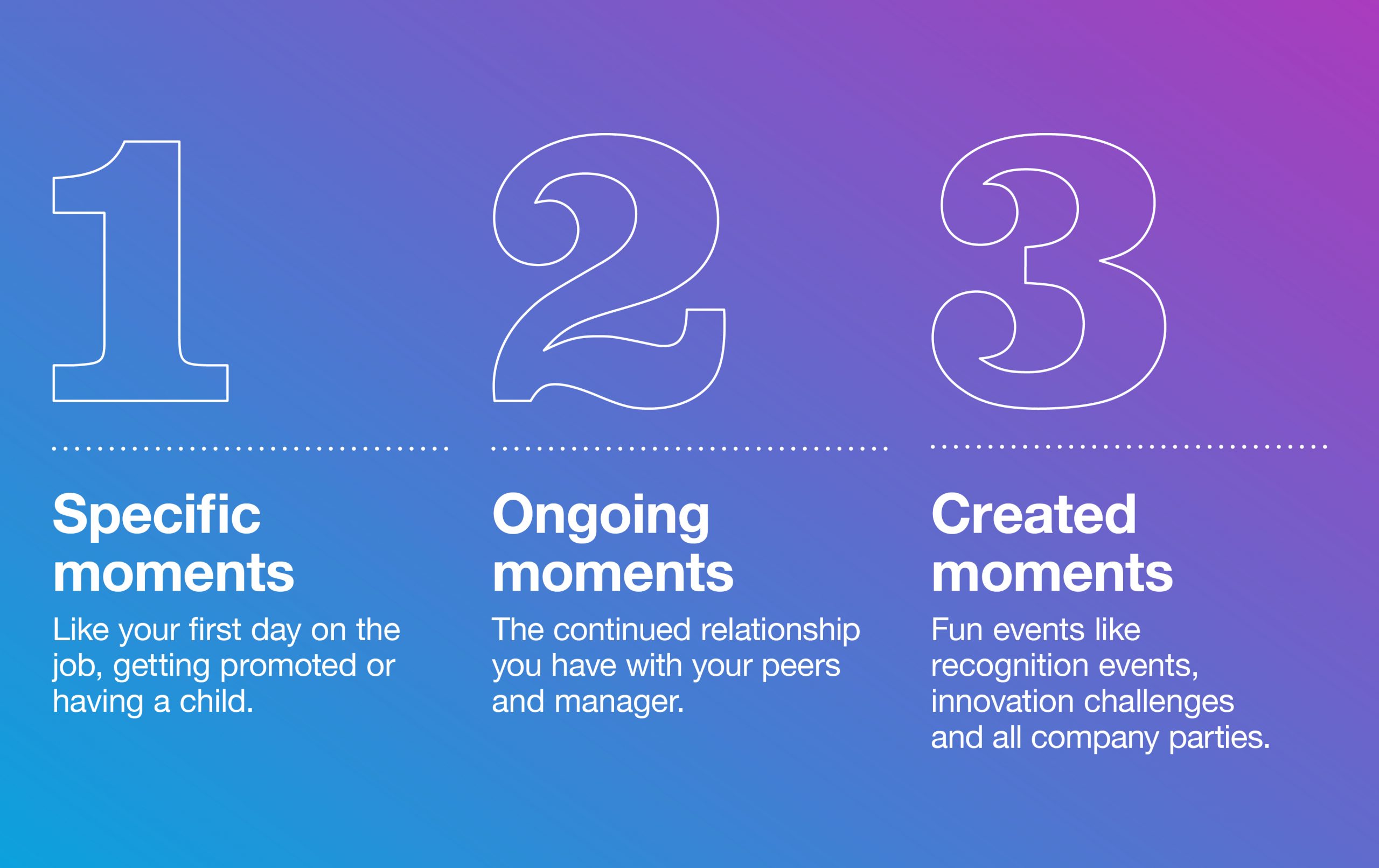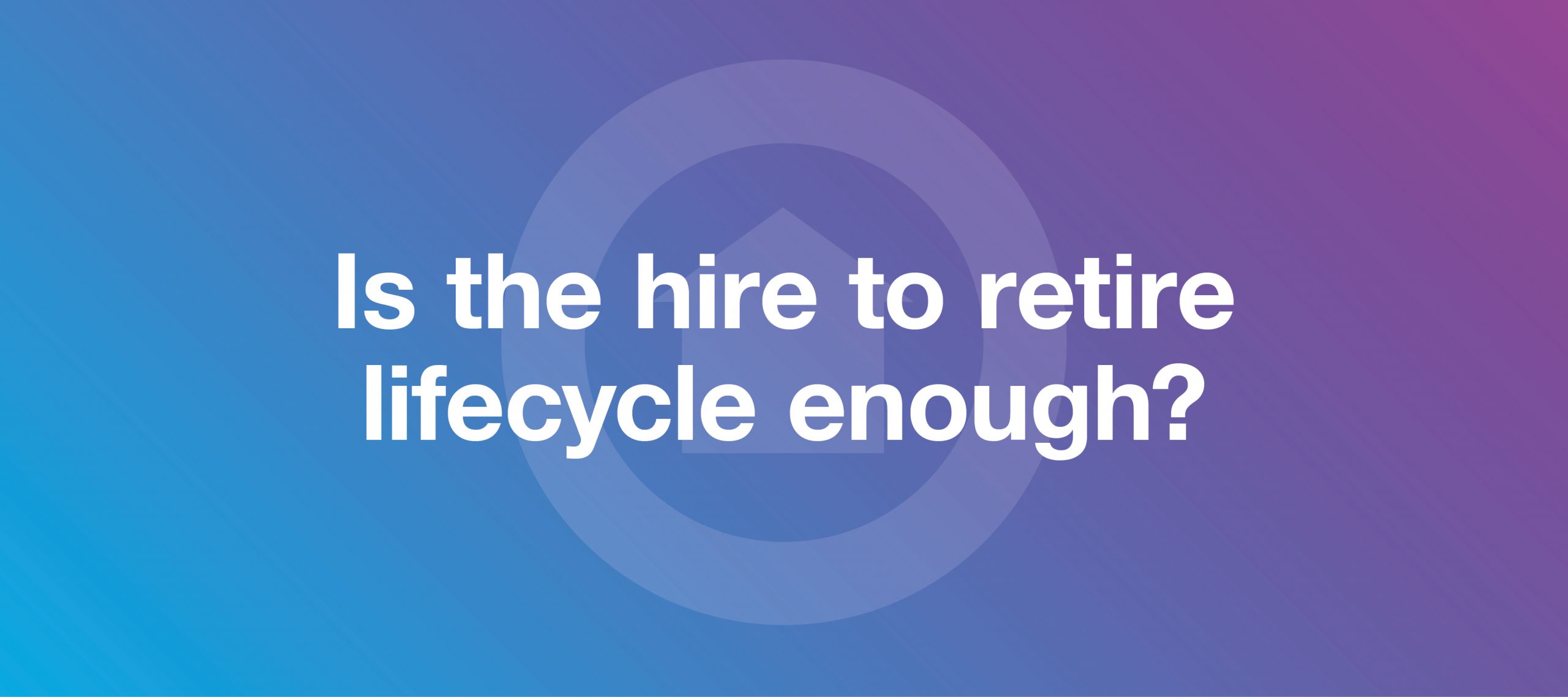When it comes to creating the very best employee experience for your people, taking a one size fits all approach just isn’t going to cut it. It’s time to focus on the moments that matter.
In this post, Homie Lauren shares her top 10 tips for mapping your unique employee journey, helping you to design a game-changing employee experience together with your people.
Is the hire to retire lifecycle enough?
Controversial thing to say as an Employee Experience Strategist I know, but hear me out.
The hire to retire lifecycle has been around for years, and it’s a really useful tool when looking at your employee journey from the top down. Applying it as a process means you can look at elements of your employee experience in isolation from start to finish; things like onboarding, learning and development, recognition and retirement.
But, if you were to look at your employee experience from the perspective of your people, it would never be described as something so linear.
That’s why we need to go one step further. We need to think in moments.
Defining moments
You see, our lives are made up of moments in time, and the more meaningful and influential those moments are, the more they shape our experiences.
For example, think back to your last holiday. On reflection, you might remember the highlights (a trip to the water park), perhaps the lowlights (some bad customer service) and almost certainly the ending (the final sunset on your last evening). You probably won’t recall what you had for breakfast each day or what sun lounger spot you acquired by the pool.
Stepping into your employees’ shoes
So, what if we looked at the overall employee experience of our organisations in the same way; as a series of moments? How powerful would it be if we could understand the moments that truly matter to employees and then intentionally design them so that they are the very best?
We’d end up with a pretty amazing overall employee experience, right?
It’s time to take the hire to retire lifecycle to the next level.
3 types of moments
Now, mapping the moments that matter isn’t a new thing. Our peers working in customer experience have been doing this for some time and there are organisations that have already taken this approach internally too. But I think it’s always good to go back to basics for those that are exploring moments mapping for the first time or want to revise what already exists.
There are three significant types of moments to look out for. Author Jacob Morgan describes these as:

These moments will come to life differently for every organisation and for every person. That’s why there’s no one size fits all checklist to use – it all starts with uncovering what the reality is for your people.
10 ways to get started with mapping your moments
At Home, we’ve been helping organisations put their people at the heart of everything they do for over 30 years, so we’ve picked up a few tricks along the way.
If you’re looking to map the moments that matter where you are, these 10 principles are here to help:
1. Let your people guide you
No one knows more about your employee experience than your people do. Create as many ways as possible to start a conversation with your people about the moments that matter to them and map these out together.
2. Beware of average
Once you’ve mapped out your moments, use as much employee insight as you can to assess how things are right now. But beware, if you are using survey data, look either side of what’s average to make sure your finding the pain points as well as any areas of total excellence.
3. Shape your moments collaboratively
Your employee experience should be created with your people, not for them. Design your moments together and don’t be afraid to dream about how great they could be.
4. Use personas
Different employee segments will have very different experiences, so make sure you’re hearing from as many people as possible in your organisation. Understanding how the experience differs for people will help you to personalise your moments as much as possible.
5. Focus on the feels
At each key moment, think about how you want people to feel, as well as what you want them to think and do. Consider their perceptions too – what are they expecting to happen?
6. Remember the little things
When it comes to employee experience, the little things are actually the biggest things. Getting right into the detail can make all the difference.
7. Stay unique
What are you known for as a business and a brand? Think about how you can create experiences that reflect that.
8. Make your created moments really stand out
Created moments are an opportunity to really surprise and delight. They have the potential to become a part of an employee’s career highlight reel, so make them count.
9. Infuse your purpose
Your reason of being needs to be at the core of your employee experience – so let it guide you as you design your moments.
10. Keep co-creating
Great employee experiences continually evolve. Keep listening and co-creating with your people every step of the way.
Employee experience is more important than ever
In these times, expectations from employees are changing by the minute.
By using these 10 principles to map the moments that matter to your people, you’ll not only meet those expectations, you’ll exceed them – creating an employee experience that attracts and retains the best talent and brings out the very best of your business.
Get in touch
If you need any support with mapping the moments that matter in your organisation or are just looking to focus on a specific part of your employee experience – just reach out, we’d love to chat/zoom/meet at a social distance for coffee. The choice is yours!





 Back to all
Back to all

